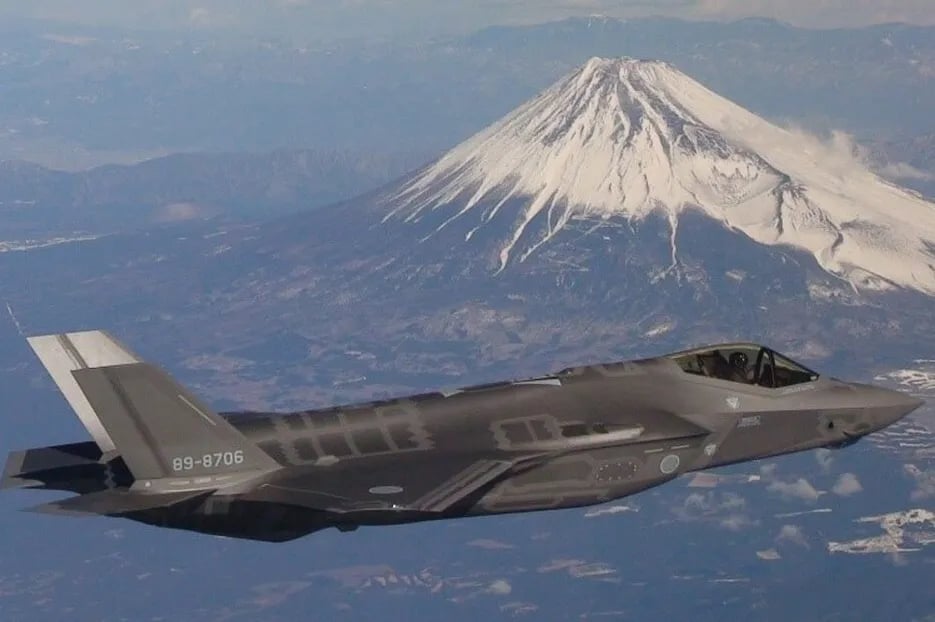
Japan Air Self-Defense Force aircraft scrambled fewer times against foreign aircraft during Fiscal Year 2023 compared to FY 2022, according to Japan’s Joint Staff Office.
A Friday report showed a total of 669 scrambles for FY 2023, or from April 1 2023 through March 30, 2024. In FY 2022, the JASDF scrambled 778 times.
Chinese aircraft accounted for 479 of the FY 2023 scrambles, or 72 percent of the overall total, though this was a decrease of 96 from 575 in FY 2022. Scrambles against Russian aircraft totaled 174, 26 percent of the overall total, and represented an increase of 24 from 150 in FY 2022. The majority of the scrambles involving China and Russia were against intelligence gathering aircraft, according to the JSO, which did not provide exact numbers. The remaining 16 scrambles included a single scramble against Taiwanese aircraft and two against North Korean aircraft, which were included in the 3rd quarter scramble reports. There were 13 other scrambles that did not include details.
The JASDF’s Southwest Air District conducted the most scrambles, with 401, and the Northern and Western air districts had similar numbers with 112 and 110, respectively. The Central Air district carried out 46 scrambles, according to the report.
The Southwest Air District normally carries out the most number of scrambles given its area of responsibility over Japan’s southwest islands, which routinely see a high number of activity by Chinese aircraft. These range from joint bomber flights with Russia, People’s Liberation Army Navy carrier flight operations and Taiwan’s surveillance flights of Japan and U.S. navy ships operating in the East China and Philippine seas. Much of the airspace is international, allowing Chinese and Russian aircraft to freely travel over the area.
This year’s reduced number of scrambles is likely because in FY 2022, the PLAN Liaoning Carrier Strike Group (CSG) conducted two deployments in May and December of 2022, with flight operations near Japan’s southwest island prompting a number of scrambles. In FY 2023, the Shandong CSG, despite conducting three deployments to the Western Pacific, deployed close to Japan once and conducted flight operations close enough to trigger scrambles by the JASDF. The Northern Air District, given its proximity to the Russian Far East mainland and Sakhalin Island, and the Western Air District, which faces parts of China across the East China Sea, both see significant air activity in their respective area of operations.
Notable events recorded since the third quarter scramble report included two Chinese H-6 bombers on March 12 flying in from the East China Sea, transiting over the Miyako Strait and then circuiting over the Philippine Sea before returning the same way. That same day, a presumed Chinese drone also was seen flying around the same area, while a WZ-7 drone flew over the Sea of Japan on March 26.
In a Friday press conference, Japan Defense Minister Minoru Kihara said that FY 2023 saw two joint Russian-Chinese bomber flights on June 7 and Dec. 14. The first flight of a Chinese UAV was between Yonaguni Island and Taiwan on Oct. 26 and the first flight of a Chinese UAV over the Sea of Japan was on March 26. Chinese and Russian aircraft remain active around Japan and the Ministry of Defense and Japanese Self-Defense Forces will continue to vigilantly conduct surveillance and take strict action against any airspace violations, the Japanese defense chief said.
Meanwhile, the JSO reported that PLAN ships were seen operating around Japan’s southwest islands. On April 10, the JSO issued a release stating that on April 2 at 10 p.m. local time, PLAN destroyer CNS Zhengzhou (151) and frigate CNS Anyang (599) were sighted sailing south in an area about 50 miles northwest of Uotsuri Island. From April 2 through April 3, the two ships were sighted sailing south in an area about 50 miles west of Uotsuri Island before sailing south in the waters between Yonaguni Island and Taiwan.
Later, on April 10 at 10 a.m. local time, Dongdiao-class surveillance ship Beijixing (791) was sighted sailing northwest in an area 56 miles southwest of Okinawa. Zhengzhou and Anyang joined Beijixing and the three ships sailed together through the Miyako Strait between Okinawa and Miyako Island to enter the East China Sea.
Japan Maritime Self-Defense Force destroyer escort JS Jintsu (DE-230), minesweeper JS Kuroshima (MSC-692), along with a JMSDF P-1 Maritime Patrol Aircraft (MPA) of Fleet Air Wing 1 based at JMSDF Kanoya Air Base on the main island of Kyushu and a JMSDF P-3C Orion MPA of Fleet Air Wing 5 based at Naha Air Base, Okinawa, shadowed the PLAN ships, according to the JSO.
On Monday, the JSO issued a separate release stating that Beijixing was sighted on Saturday at 1 a.m. local time sailing east in an area 25 miles south-east of the Kusagaki Islands and subsequently transited through the Osumi Strait, which lies between the main island of Kyushu and Tanegashima Island, to enter the Pacific Ocean. Destroyer JS Ariake (DD-109) and a JMSDF P-1 MPA of Fleet Air Wing 1 monitored the PLAN ship.





